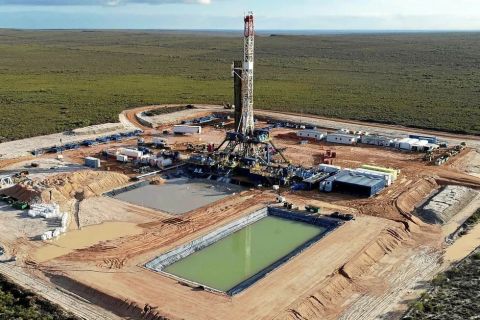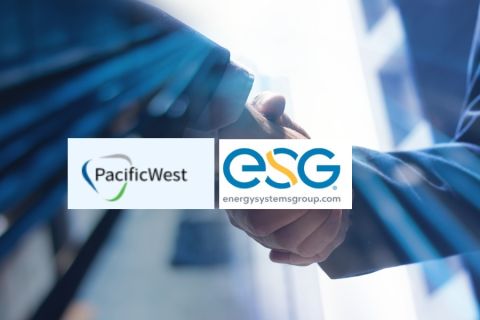When this industry seizes on a hot topic, it goes overboard. Suddenly my inbox is all LNG, all the time. Reports, backgrounders, press releases, conference agendas, newly minted newsletters-all devoted to liquefied natural gas. People say the international gas market has arrived. Now that gas (in LNG form) is a global commodity, it will be subject to geopolitical fallout and volatility, maybe even trading on the Nymex, much as crude oil is. Just what we need. Is LNG for real? Although it will become a larger part of the U.S. energy mix later this decade, U.S. producers do not have to worry about LNG affecting domestic supply or prices until 2007 at the earliest. Meanwhile, recent news events highlight the growing importance this fuel has. All were set in motion long before Fed chairman Alan Greenspan drew attention to the North American gas supply shortage this past summer. We ourselves were thinking about LNG nearly a year ago when we started to plan for this month's cover story. The U.S. imports an average 2.6 billion cubic feet per day in LNG form. In the past two years, that supply has come from Trinidad, Algeria, Australia, Nigeria, Oman, Qatar, Indonesia and the United Arab Emirates, according to the Department of Energy. More is forthcoming from other nations in the next few years. DOE says that worldwide, 17 LNG export terminals are sending the stuff to markets. In late August, the first LNG shipment arrived at the reopened Cove Point LNG Terminal in Maryland-a facility now owned by Dominion Resources, but which had been shuttered and inactive for 23 years. BP sent the cargo from Trinidad. You will learn much more about that country's vast oil and gas assets and BP's activities there in this month's cover story. (Also in this issue, you'll get background from a second article on LNG.) And at press time, San Diego-based holding company Sempra Energy became the first U.S. company in more than 25 years to get the green light from the Federal Energy Regulatory Commission (FERC) to build a new LNG facility. FERC's landmark ruling on September 10 authorized Sempra to construct a $700-million receiving terminal in Hackberry near Lake Charles, Louisiana. This project, called Cameron LNG, is the furthest along of the half-dozen or more that have been proposed along the Texas and Louisiana coasts. All are winding their way through the regulatory process at the state and federal level. The terminal will have the capacity to process up to 1.5 billion cubic feet of gas per day. To put that in context, this is only about 2% of current U.S. consumption. Sempra says construction will start in the first quarter of 2004, with the plant beginning operation in 2007. The company purchased this site, a mothballed LPG terminal, from Dynegy this past April. Separately, Sempra has received authority from Mexico's equivalent of FERC to build a new LNG facility in that country as well. Marathon Oil Co. also has a permit to build in Baja California, Mexico. Energy Secretary Spencer Abraham has called for a global LNG summit later this year. Already, the Department of Energy and the National Association of Regulatory Utility Commissioners (NARUC) are preparing an LNG primer and an LNG white paper for state regulatory, energy and environmental officials and public utility commissioners, so they can be in the loop as additional permitting gets under way. But LNG is not an easy solution to rising gas demand. "Price will decide who gets the LNG and U.S prices will need to have at least a 55-cent-per-MMBtu premium to divert supplies away from Europe," says Petrie Parkman & Co. analyst Stuart J. Wagner in a report. Last year, he says, Europe imported six times the amount of LNG the U.S. did, and it is projected to require double that amount by 2010. At the moment, the Europeans have more greenfield import terminals and expansions on the drawing board than the U.S. does. So the bottom line is, the world will have to find and produce a lot more natural gas, and convert it to LNG, to meet rising gas demand. And other consuming countries will compete with us for that supply. The editors of Oil and Gas Investor are pleased to announce the first annual Oil and Gas Investor Excellence Awards, which we will present at the 2004 NAPE in Houston in February. We feel it is time we recognize excellence in the oil and gas industry, so we invite your nominations of exemplary companies that are doing things right. Categories include: Best North American Field Discovery, Best Field Rejuvenation, M&A Deal of the Year, Financing of the Year, Best Corporate Citizen, Best IR Program, and Energy Executive of the Year for 2002. In this issue, see page 86 for a nomination form that can be copied and faxed to us, attention Managing Editor Nissa Darbonne, 713-840-8585. We look forward to seeing your input.
Recommended Reading
Brett: Oil M&A Outlook is Strong, Even With Bifurcation in Valuations
2024-04-18 - Valuations across major basins are experiencing a very divergent bifurcation as value rushes back toward high-quality undeveloped properties.
Marketed: BKV Chelsea 214 Well Package in Marcellus Shale
2024-04-18 - BKV Chelsea has retained EnergyNet for the sale of a 214 non-operated well package in Bradford, Lycoming, Sullivan, Susquehanna, Tioga and Wyoming counties, Pennsylvania.
Triangle Energy, JV Set to Drill in North Perth Basin
2024-04-18 - The Booth-1 prospect is planned to be the first well in the joint venture’s —Triangle Energy, Strike Energy and New Zealand Oil and Gas — upcoming drilling campaign.
PGS, TGS Merger Clears Norwegian Authorities, UK Still Reviewing
2024-04-17 - Energy data companies PGS and TGS said their merger has received approval by Norwegian authorities and remains under review by the U.K. Competition Market Authority.
Energy Systems Group, PacificWest Solutions to Merge
2024-04-17 - Energy Systems Group and PacificWest Solutions are expanding their infrastructure and energy services offerings with the merger of the two companies.




